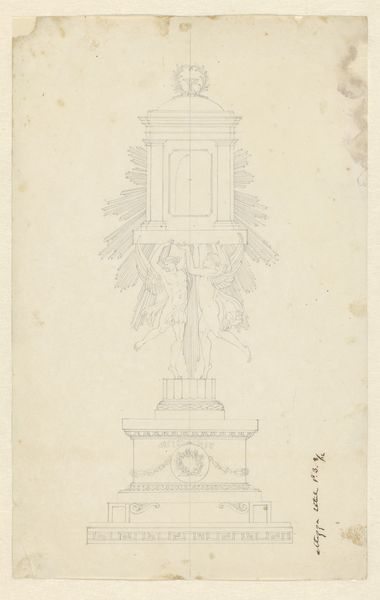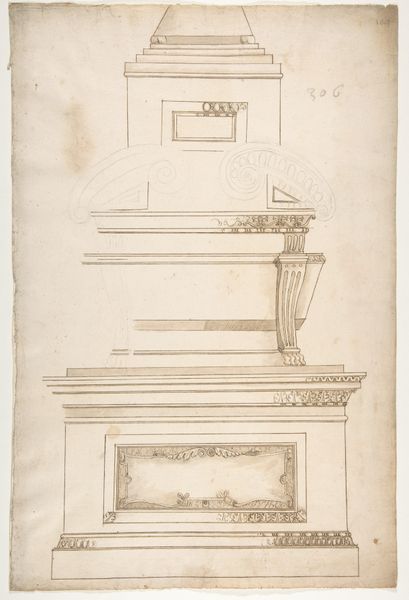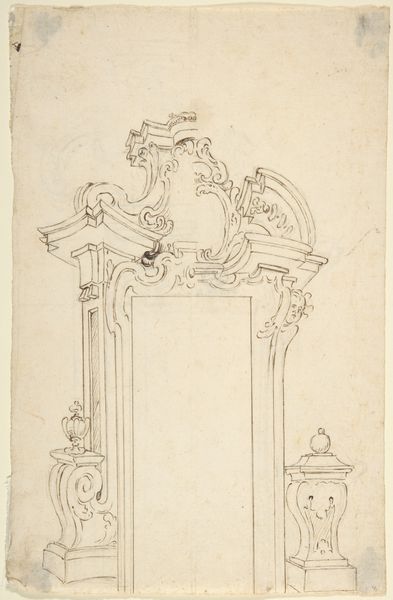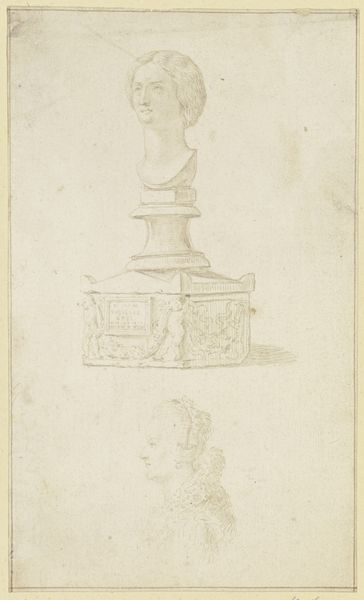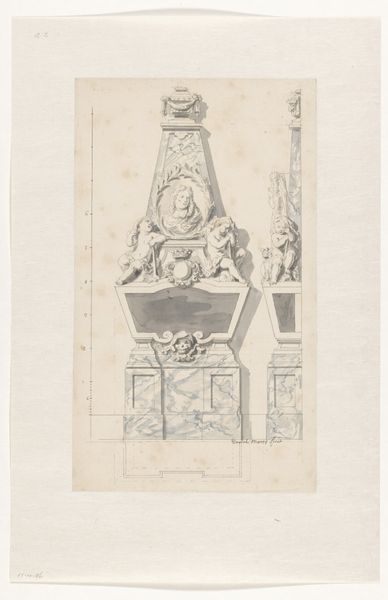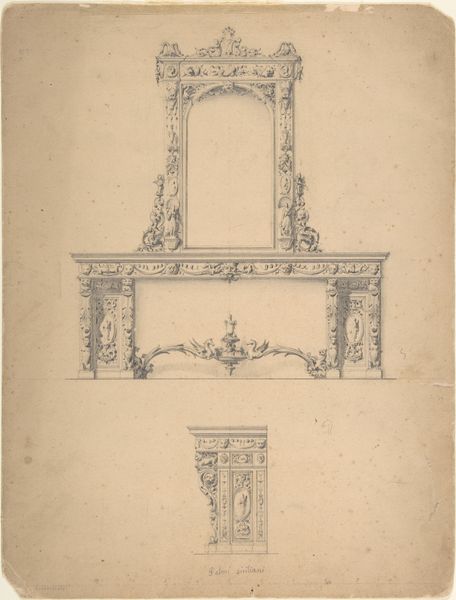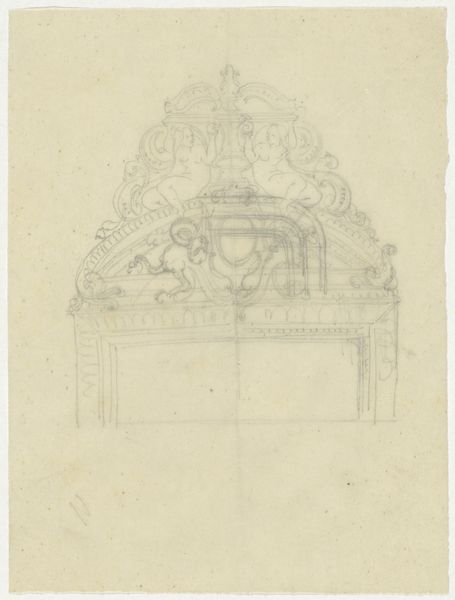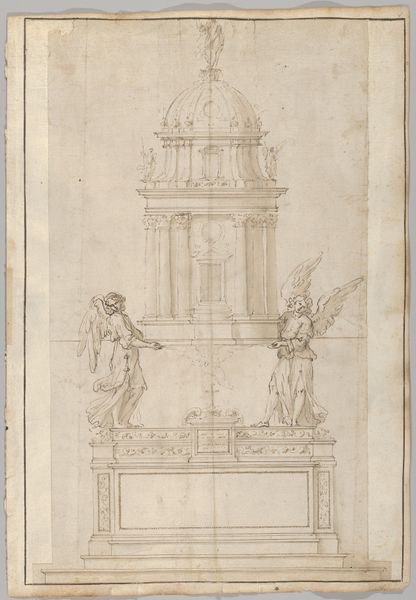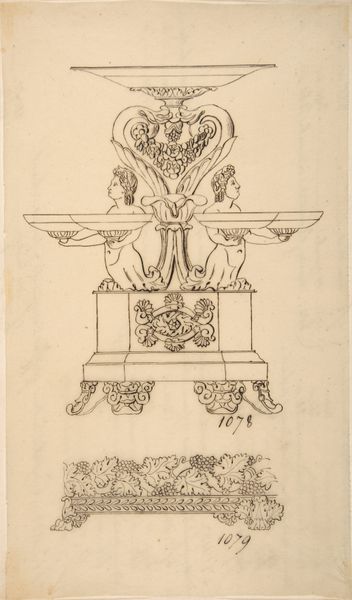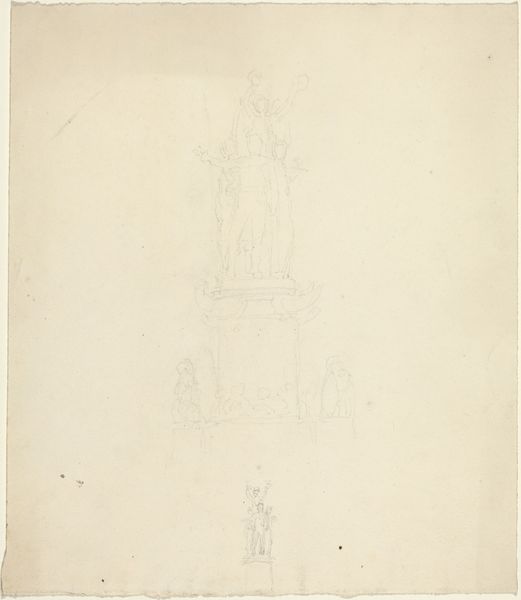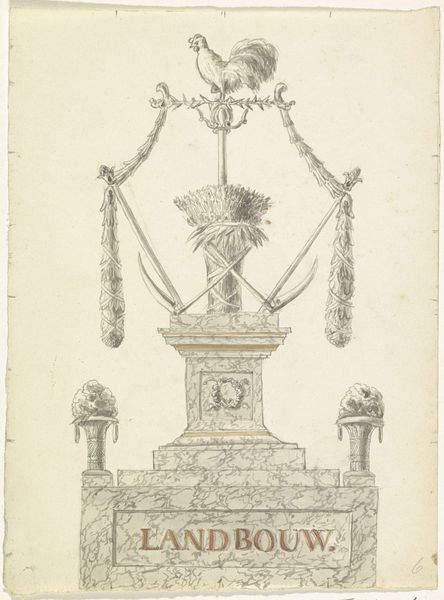
drawing, print, etching
#
drawing
# print
#
etching
#
pencil sketch
#
landscape
#
etching
#
form
#
line
Dimensions: sheet: 6 1/4 x 5 11/16 in. (15.8 x 14.4 cm)
Copyright: Public Domain
Editor: This delicate line drawing, titled "Project for a Fountain" is attributed to an anonymous artist and dates to sometime in the 16th or 17th century. It's a study in ink, really spare but elegant. What do you see in this piece, viewed through the lens of cultural and art history? Curator: It's fascinating how this simple sketch embodies so much about the social function of art at that time. Think about where a fountain like this would be placed – likely in a public space, maybe a grand villa's courtyard, becoming a focal point for social interaction and display of power. What does the choice of rendering a fountain say about public art's goals? Editor: I suppose it elevates the practical use of water into something beautiful and celebratory. Like saying "We can not only survive but also thrive and create beauty." Curator: Precisely. And consider who had access to such displays. It wasn't just about aesthetics; it reinforced social hierarchies. Also, notice the absence of people in the drawing. This creates a space that is meant to be controlled and designed. Where would a sketch like this be found, and what influence does that institutional surrounding have on the sketch? Editor: You're right, I didn't initially consider the exclusivity. Probably within a noble's collection, a display of their artistic patronage or maybe just kept by the artist or architect as part of their professional collection. That gives it a new dimension. Curator: Exactly! This drawing goes beyond just a design. It’s a record of aspiration and power, framed within the socio-political landscape of its time. Editor: I never would have thought such a simple drawing could speak volumes about cultural status! It's incredible to consider the many levels art exists on. Curator: Indeed, by understanding how institutions and power dynamics shape artistic expression, we gain a deeper appreciation of the art itself.
Comments
No comments
Be the first to comment and join the conversation on the ultimate creative platform.
